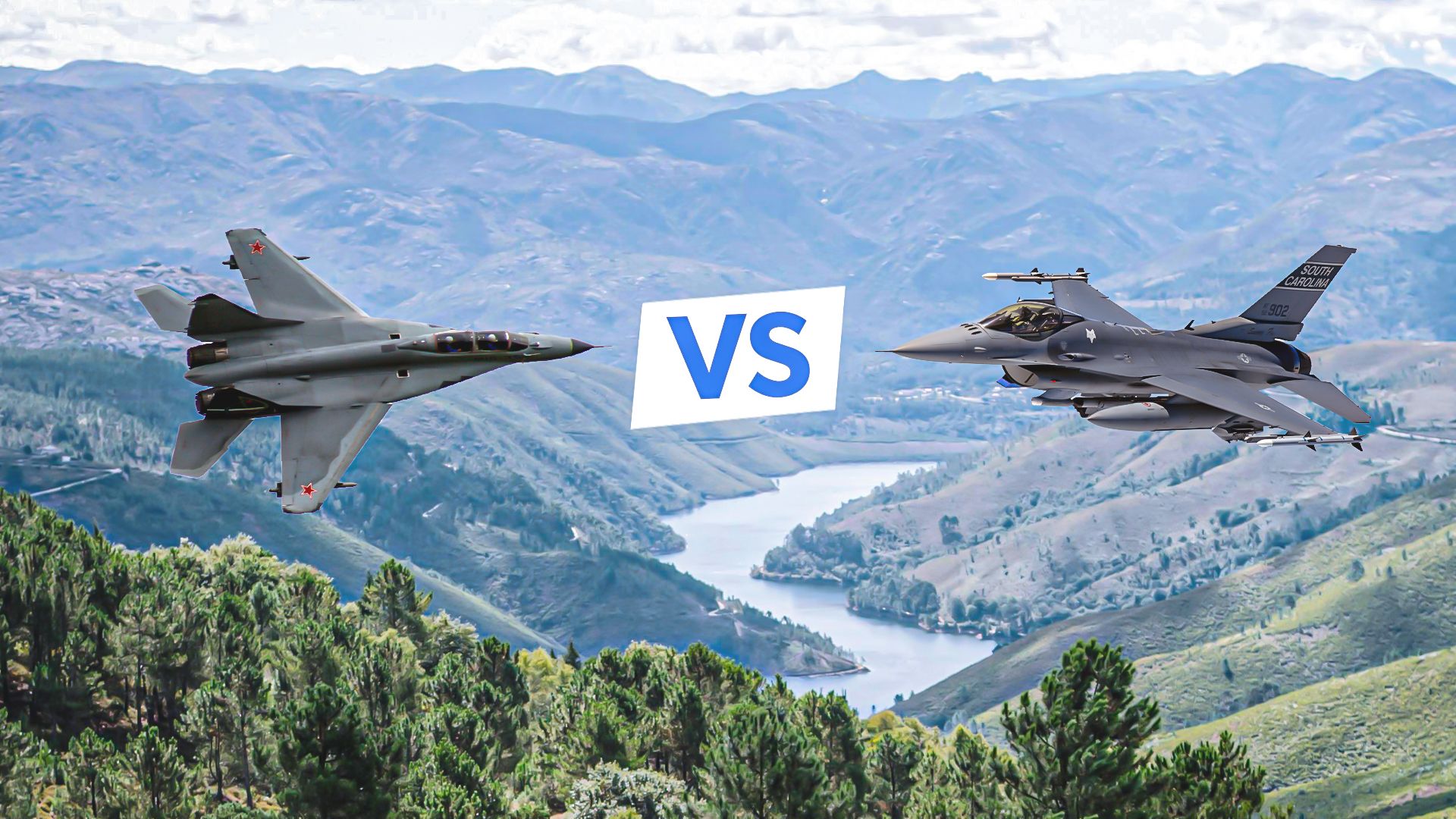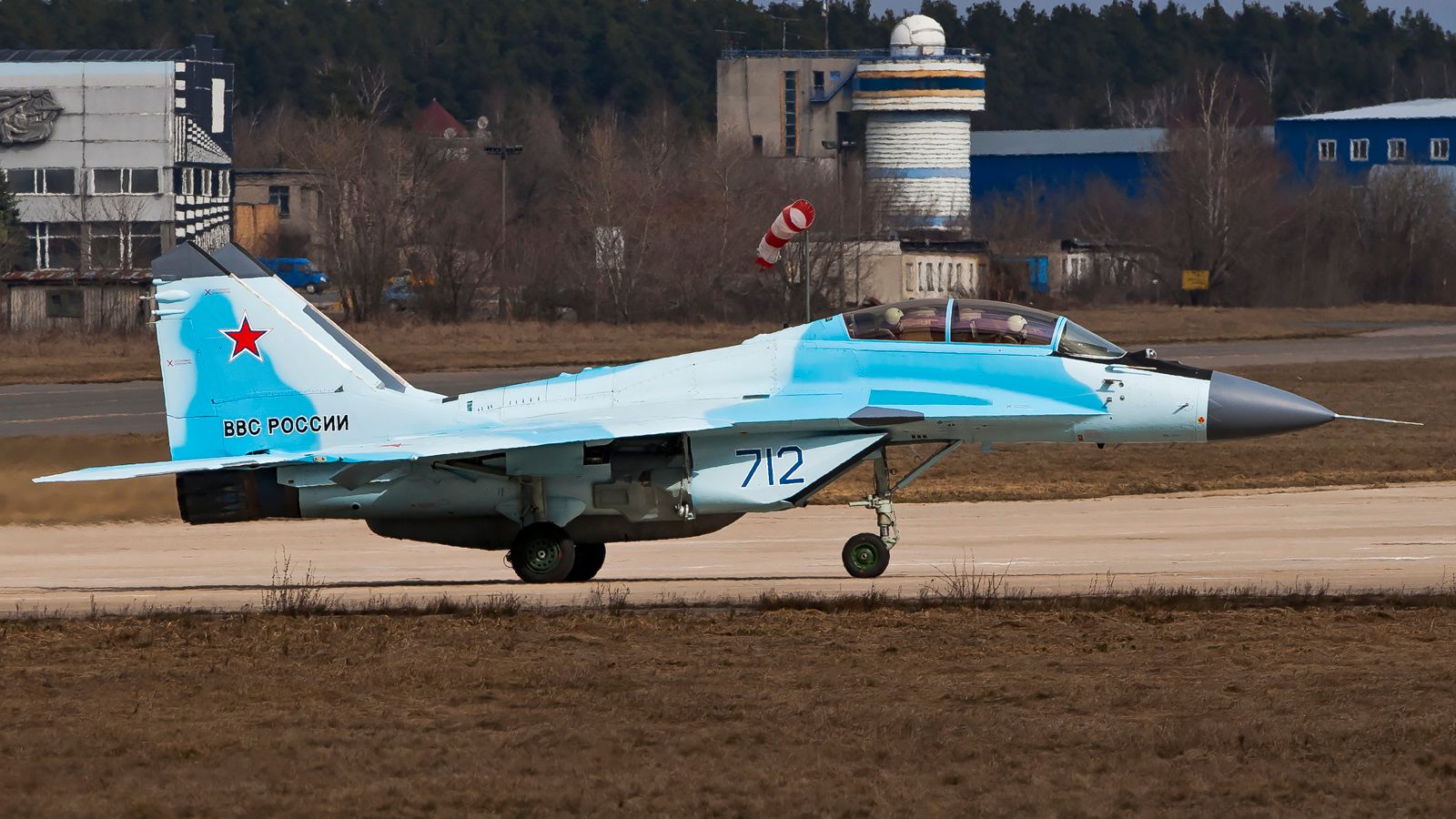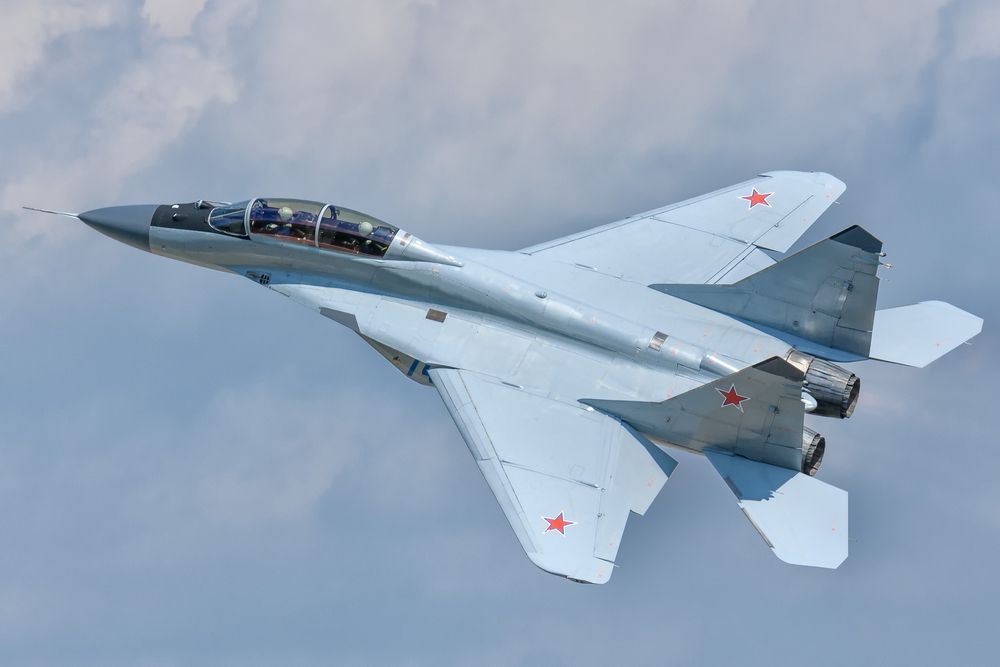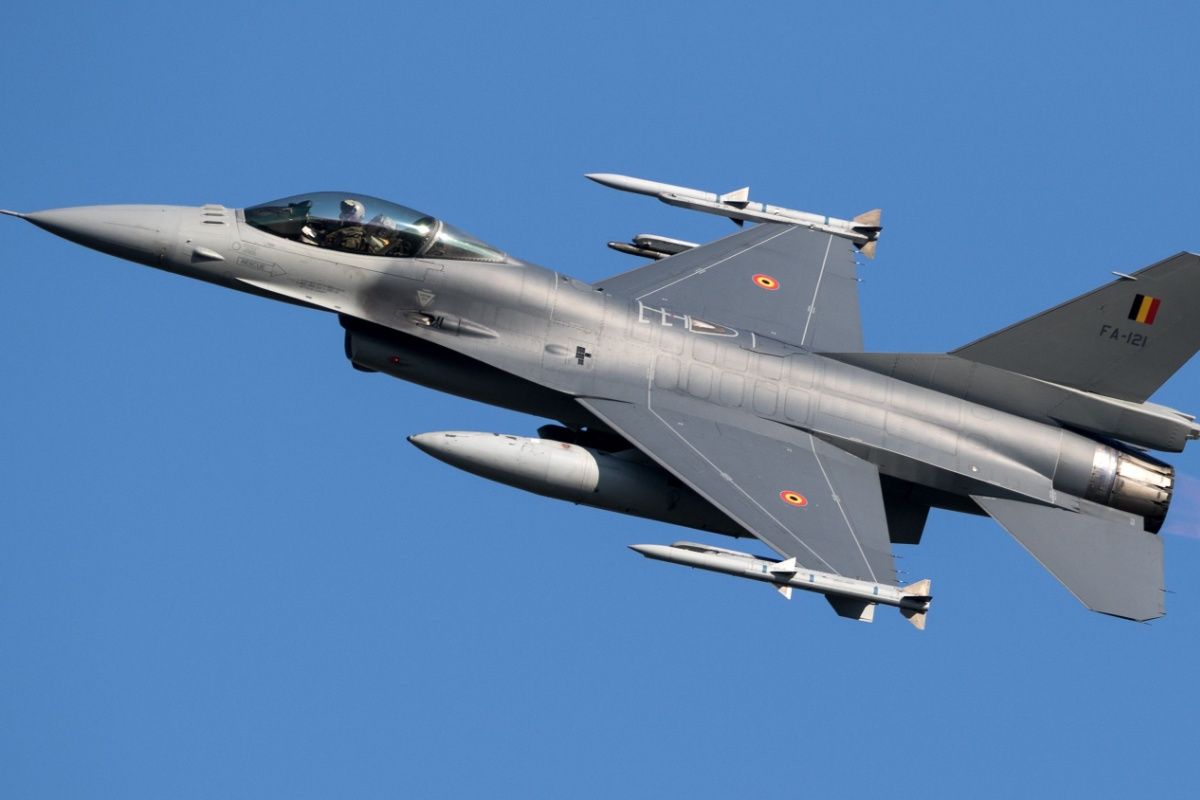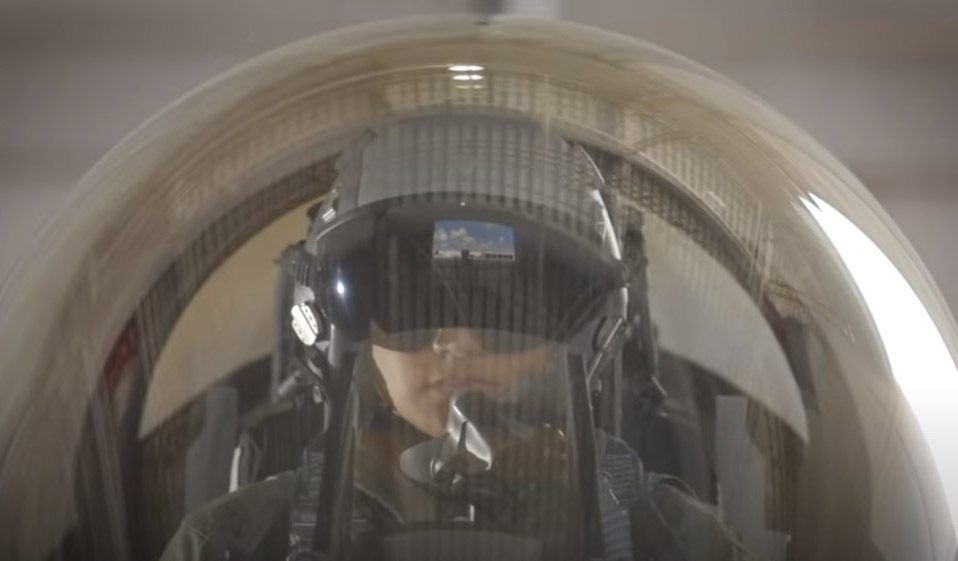Summary
- Russia’s MiG-35 struggles to find buyers due to reported issues with radar and engines.
- Ukraine’s aging F-16 Block 15/20 variants might be matched by Russia’s more modern MiG-35.
- Other factors like missile capabilities and training level are crucial in determining the effectiveness of any fighter jet in potential air-to-air combat.
With the seemingly imminent arrival of Ukraine’s much anticipated F-16 Fighting Falcons, questions are raised about how the legacy American fighter would compete against Russia’s aircraft, such as the MiG-35 (an upgraded MiG-29 variant). While dogfights are mostly a thing of the past (and it is possible Ukraine will not use the F-16 in an air-to-air role) if an air fight was to happen, which would win?
Russia’s upgraded MiG-29 no one buys
Russia markets the highly modernized MiG-29 variant, the MiG-35 Fulcrum, as a 4++ generation fighter. Newsweek states, “Experts have raised concerns about the MiG-35, which was designed for intense conflict zones, but there are reports of issues with radar and engines.” Perhaps one indication that the MiG-35 is not all the Russians make it out to be is that no country has ordered it (Russia had built it with hopes of exports). Meanwhile, export orders for the F-16 family remain strong.
If the Fulcrum really were to be a 4++ gen fighter, it would likely outclass the old F-16s. Sputnik International reported one Russian pilot as saying the MiG-35 is “comparable to the US Navy’s F-16 multirole higher when it comes to maneuverability, combat potential, and survivability.”
This statement is confusing as the Navy does not operate the F-16 (it operates the F/A-18). And even if the F-16 is intended, it is unclear which variant he refers to. Night and day differences exist between the F-16 Block 15 and the F-16 Block 70/72.
|
F-16 Profile |
MiG-35 Profile |
|
|---|---|---|
|
Role: |
multirole fighter |
multirole fighter |
|
Variant: |
upgraded Block 15/20 |
considerably upgraded MiG-29 |
|
Generation: |
4th gen (Block 70 arguably 4.5th gen fighter) |
4.5++ (Russian marketing claim) |
|
Manufacturer: |
General Dynamics |
Mikoyan |
|
First flew: |
1974 |
2016 (1977 MiG-29) |
|
Total units built: |
4,600+ |
perhaps 6 (1,600+ MiG-29) |
|
Engine: |
General Electric F110-GE-129 |
Klimov RD-33MK (also used in MiG-29) |
While it is possible (or even likely) that some F-16s will find themselves engaging Russia’s Su-27 Flanker family (including Su-30s, Su-34s, and Su-35s), and ground attack aircraft like the Su-25, it is very unlikely it will specifically engage the MiG-35.
The jet was only introduced in 2019, and it has been produced in very low numbers and has been largely absent from the war (as have legacy Russian MiG-29s). It is possible Russia has not purchased any more than the 2018 order for 6 airframes for the Aerobatic group Strikzhi, as reported by Russia Today. It’s not MiGs but Sukhois that are the mainstay of the Russian fighter jet fleet. The Flanker family provides the backbone of the Russian fighter jet power.
Photo: Arkady Zakharov l Shutterstock
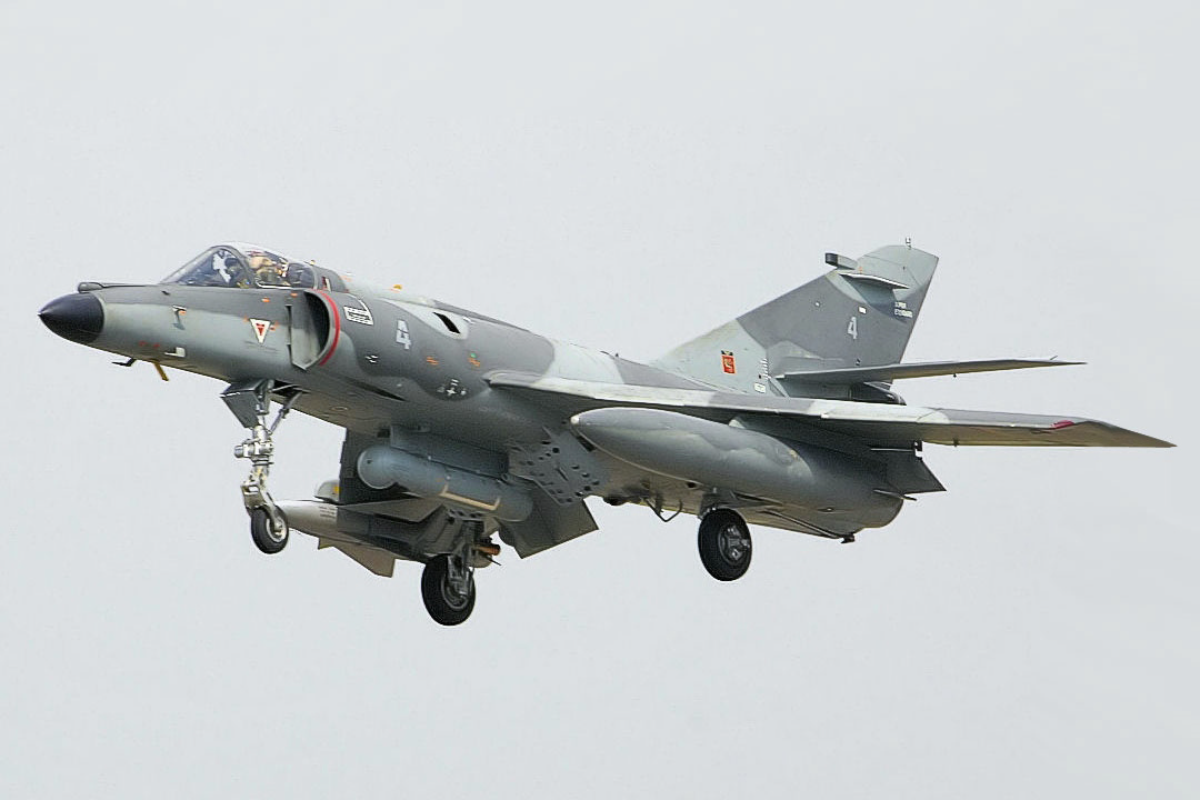
Related
But It’s Complicated: Argentina’s President Approves Sending 5 Dassault Super-Étendard Combat Jets To Ukraine
Argentina may supply five French-made Super-Étendard jets to Ukraine that saw action in the Falklands War against the British.
Ukraine’s limited aging F-16s
While the F-16 has an outstanding air-to-air combat history (with only one confirmed air-to-air loss), it is an aging system. The jets Ukraine is receiving are old F-16 Block 15/20 variants that have been upgraded over the years. That said, the F-16 boasts fly-by-wire controls, giving the pilot superior flight control. An important point is which generation radars the F-16s will be fitted with when delivered to Ukraine.
|
F-16 performance: |
MiG-35 performance |
|
|---|---|---|
|
Max speed: |
Mach 2.05 |
Mach 2.25 |
|
Thrust w/afterburner: |
29,500 lbf |
19,800 lbf |
|
Max thrust: |
29,500 lbf |
39,600 lbf |
|
Range: |
2,280 nm |
1,100 nm |
|
Service ceiling: |
58,000 feet |
52,000 feet |
|
G limit: |
9g |
9g |
Photo: VanderWolf Images l Shutterstock
Ukrainian President Volodymyr Zelensky stated that Ukraine needs 120 to 130 Western fighter jets to counter the Russian Air Force. So far, a total of 95 F-16s have been pledged to Ukraine, according to the Oryx blog. However, this includes aircraft to be delivered for spares, and the full amount will not be delivered until 2028.
France has recently pledged an undisclosed number of Mirage 2000-5s. Argentina also plans to hand over a handful of French-built Super-Étendard jets, which will help increase the numbers.
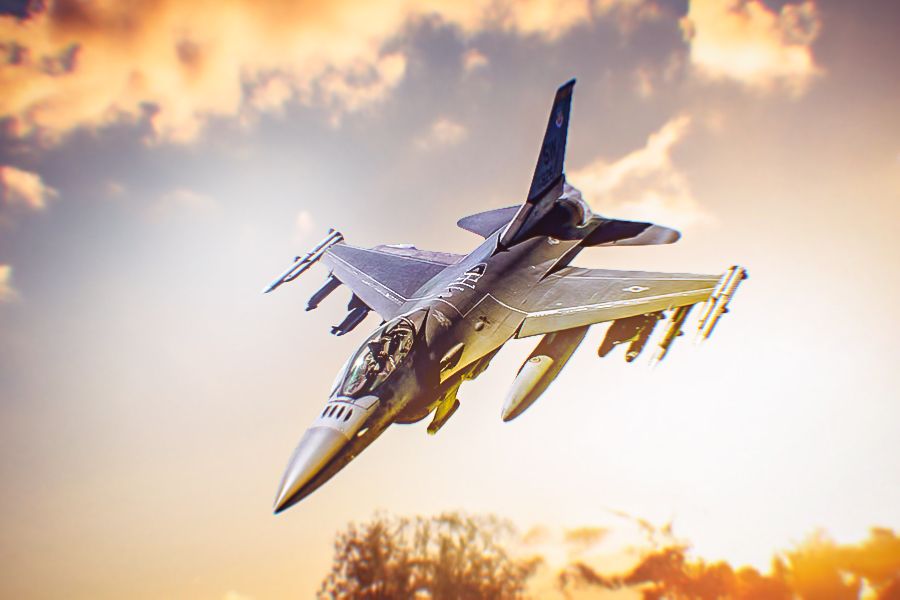
Related
Denmark Will Allow Ukraine To Fly Its F-16s Into Russia Proper
Ukraine will be able to use Danish and Dutch F-16s to strike into Russia, while Belgium is saying only for use in 1991-border Ukraine.
Other factors in an air-to-air fight
The effectiveness of the F-16s also depends on many factors beyond the airframes themselves. One critical unknown at this point is what missiles the West is prepared to deliver with them (e.g., it is unlikely Ukraine will receive Europe’s advanced Meteor missile). Another factor is that Ukraine is only likely to be able to field the F-16s in low numbers—perhaps single or low double digits—for some time.
Example important fighter jet enablers:
- Fighter jet’s radar
- Pilot training
- Missiles carried
- Supporting factors (e.g., AWACS, networking)
- Stealth
Photo: Lockheed Martin
Other variables difficult to gauge at this stage are the level of training and support (e.g., how much intel Western forces will supply from AWACs and other intelligence-gathering platforms). Sweden has recently announced it will supply Ukraine directly with its rare ASC 890 AWACS aircraft, which could significantly increase the effectiveness of the F-16s.
It is perhaps unlikely that Ukrainian F-16s and Russian MiG-35s will face each other in any significant way in the war in Ukraine (especially since it seems the only MiG-35s flying are part of an aerobatic team). So far in this war, there have been very few air-to-air kills, with most jets (on both sides) being shot down by ground-based fires or destroyed on the ground. Ukraine has recently been destroying advanced Russian air defense batteries (including S-300 and S-400s) at a surprising rate. Some commentators suggest that this is in preparation for the arrival of the F-16s.
Recently, Russia lost its most advanced fighter jet, the 5th generation Su-57 Felcon, on the ground to a drone attack. This was likely the first 5th-generation fighter jet to have been lost in combat – and it was lost to a cheap, basic drone.

